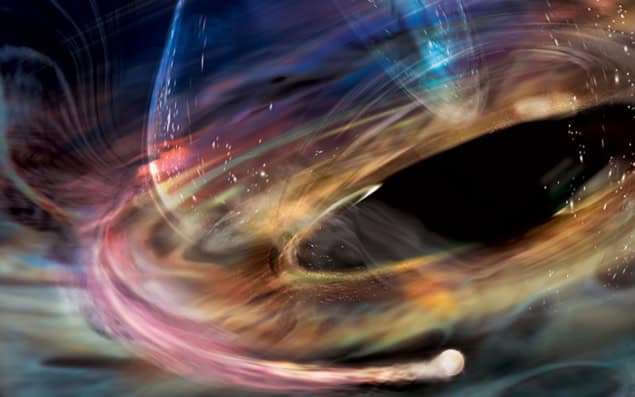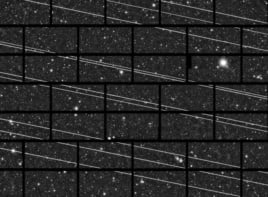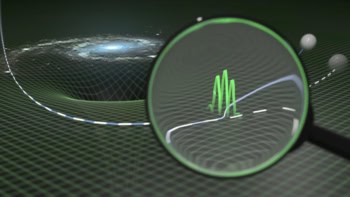
An international team of researchers has detected a series of significant X-ray oscillations near the innermost orbit of a supermassive black hole – an unprecedented discovery that could indicate the presence of a nearby stellar-mass orbiter such as a white dwarf.
Optical outburst
The Massachusetts Institute of Technology (MIT)-led team began studying the extreme supermassive black hole 1ES 1927+654 – located around 270 million light years away and about a million times more massive than the Sun – in 2018, when it brightened by a factor of around 100 at optical wavelengths. Shortly after this optical outburst, X-ray monitoring revealed a period of dramatic variability as X-rays dropped rapidly – at first becoming undetectable for about a month, before returning with a vengeance and transforming into the brightest supermassive black hole in the X-ray sky.
“All of this dramatic variability seemed to be over by 2021, as the source appeared to have returned to its pre-2018 state. However, luckily, we continued to watch this source, having learned the lesson that this supermassive black hole will always surprise us. The discovery of these millihertz oscillations was indeed quite a surprise, but it gives us a direct probe of regions very close to the supermassive black hole,” says Megan Masterson, a fifth-year PhD candidate at the MIT Kavli Institute for Astrophysics and Space Research, who co-led the study with MIT’s Erin Kara – alongside researchers based elsewhere in the US, as well as at institutions in Chile, China, Israel, Italy, Spain and the UK.
“We found that the period of these oscillations rapidly changed – dropping from around 18 minutes in 2022 to around seven minutes in 2024. This period evolution is unprecedented, having never been seen before in the small handful of other supermassive black holes that show similar oscillatory behaviour,” she adds.
White dwarf
According to Masterson, one of the key ideas behind the study was that the rapid X-ray period change could be driven by a white dwarf – the compact remnant of a star like our Sun – orbiting around the supermassive black hole close to its event horizon.
“If this white dwarf is driving these oscillations, it should produce a gravitational wave signal that will be detectable with next-generation gravitational wave observatories, like ESA’s Laser Interferometer Space Antenna (LISA),” she says.
To test their hypothesis, the researchers used X-ray data from ESA’s XMM-Newton observatory to detect the oscillations, which allowed them to track how the X-ray brightness changed over time. The findings were presented in mid-January at the 245th meeting of the American Astronomical Society in National Harbor, Maryland, and subsequently reported in Nature.
According to Masterson, these insights into the behaviour of X-rays near a black hole will have major implications for future efforts to detect multi-messenger signals from supermassive black holes.
“We really don’t understand how common stellar-mass companions around supermassive black holes are, but these findings tell us that it may be possible for stellar-mass objects to survive very close to supermassive black holes and produce gravitational wave signals that will be detected with the next-generation gravitational wave observatories,” she says.

Colliding star may have switched-off black hole’s X-ray corona
Looking ahead, Masterson confirms that the immediate next step for MIT research in this area is to continue to monitor 1ES 1927+654 – with both existing and future telescopes – in an effort to deepen understanding of the extreme physics at play in and around the innermost environments of black holes.
“We’ve learned from this discovery that we should expect the unexpected with this source,” she adds. “We’re also hoping to find other sources like this one through large time-domain surveys and dedicated X-ray follow-up of interesting transients.”



